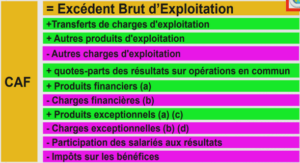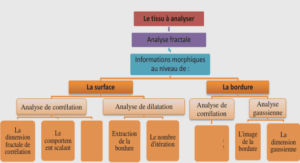LISTENING
WHAT IS LISTENING?
According to The Cambridge international Dictionary language (1995), “to listen” is to give attention to a person or thing that you can hear.
The Longman Concise English Dictionary (1985) gives three definitions of “to listen”, first “to pay attention to sound or to music”; second “to hear or consider with thoughtful attention”; and third, “to be alert to catch an expected sound”.
For RIVERS (1986) “listening is the act of receiving messages. Listeners construct a message from what they are hearing”.
For UNDERWOOD (1989) “listening is the activity of paying attention to and trying to get meaning from something we hear. To listen successfully to spoken language, we need to be able to work out what the speakers mean when they use particular words in particular ways on special occasions and not simply understand the words themselves”. NUNAN (1999) defines “listening” as “the absorption of meanings and sentences by the brain. Listening leads to the understanding of facts and ideas”. We can see from these definitions that listening and hearing cannot be separated. However, most people tend to assume that “listening” is basically similar to “hearing. This concept is misleading. Thus we need to make a clear distinction between “listening” and “hearing”.
HEARING VERSUS LISTENING
There is an everyday distinction made between the two terms “hearing” and “listening”. “Hearing” is simply the perception and recognition of sounds, that is, we perceive the sounds that come to our ears, though we do not intend to take them into account. It is like when we say “I‟m sorry, I didn‟t hear exactly what you said”. Unlike hearing “listening” requires an effort from the listener and implies his will. He wants to hear what is said to him and, therefore, he makes an effort to perceive, to recognize the sounds and to make sense from what he listens to. In other words, “listening implies some conscious attention to the message of what is said, as when we say “Are you listening to me?” (RIXON, 1986). Thus, listening is something we consciously choose to do. Furthermore, BURLEY –ALLEN (1999) states that “listening involves a more sophisticated mental process than hearing. It demands energy and discipline”.
In our everyday life we cannot avoid perceiving many different sounds at a time, that is, we may hear different voices at one time but we hear only one voice when we listen. In other words, listening is a selective and active activity, whereas hearing is passive.
In real life, too, we may hear someone talking but since we are not interested in it, we do not try to understand it. We may sometimes listen to songs while doing housework; we may listen without much concentration. But there are times when the words, or the tune of the song, or the voice of the singer attract our attention and interest; then, we begin to listen and appreciate the whole song. Afterwards, the song might stick in our brain and we might remember both the melody and the lyrics at first hearing. Listening leads to learning.
In a word, we can say that the difference between “hearing” and “listening” is that we begin to listen only when we realize that what we have heard interests us.
LISTENING IN REAL LIFE
There are many situations in which we must use our ability to listen in real life.
What do we listen to?
We can listen to many different things. Here are some examples of listening situations according to RIXON (1986).
– Listening to announcements in stations, airports, etc.
– Listening to the radio
– Participating in a face to face conversation
– Watching a film, a play, or TV
– Participating in a meeting, a seminar, or a discussion
– Taking part in a lesson
– Listening to a talk or lecture
– Eavesdropping on other people‟s conversations
– Participating in a telephone conversation .
The real life situations we listen to are all different. In general, the difference lies on the fact that in some situations the speaker is physically present and in others he is replaced by a machine. Like in a face to face conversation, for instance, the speaker is physically present. In such situation the interaction between the speaker and the listener is possible in which the listener is expected to give immediate response (verbal or non-verbal) to what he listens. Apart from the speaker‟s facial expression, posture, eye direction, proximity, gesture, tone of voice, the listener is helped by some visual or environmental clues to help him understand; for example, a teacher or a lecturer using diagrams and pictures to clarify her explanation. Moreover, the listener also often hears colloquial and informal speech, often coming in short chunks, that is, the speaker is often interrupted, say, by other people‟s talking or even smaller units of physical movements from the listener. Besides, the listener‟s perception may be interrupted by background noises in which he has missed some information which will be filled by the speaker‟s redundant speech later.
In other situations, however, the speaker is not physically present and there is a medium (a radio or a TV set) between the speaker and the listener. The listening activity in such situations is much harder since the listener cannot interact with the speaker though he can see the speaker, like watching TV for example. The listener has only the sounds coming to his ears. Moreover, the heard discourse is less redundant and the listener is, generally, not provided with visual or environmental clues. Besides, the background noises are not negligible. All this requires the listener to make greater effort and to have much concentration while listening.
We cannot assume that all the situations have all these characteristics. Sometimes we may hear uninterrupted speech like a lecture for example, or, in a telephone conversation, we cannot see the speaker but we must respond to him.
How do we listen?
Not only are the listening situations we listen to different but also the way we listen differs from one situation to another. In real life, there are two ways in which we often listen.
DOFF (1988) names these ways as “casual” and “focused” listening. What differentiates these two ways of listening is the degree of concentration we give to a listening activity.
Sometimes listening is casual in such situations as chatting to a friend, or listening to the radio while doing some housework in which we listen with no particular purpose in mind, and often without much concentration. In casual listening we usually do not listen very closely, unless we hear something that particularly interests us, and afterwards we may not remember much of what we heard.
On the other hand, focused listening consists in listening for a particular purpose to find out information we need to know. For instance, when listening to a piece of important news on the radio, or listening to someone explaining how to operate a machine, we listen very closely. However, we do not listen to everything we hear with equal concentration – we listen for the most important points or for particular information. Usually, before listening we set up our purpose with certain expectation; if not we shall not listen at all, let alone understand. In other words, we know beforehand what we are listening for (the things we want to know), and this helps us to listen.
INTRODUCTION |






